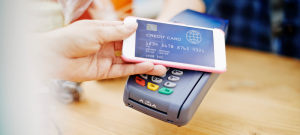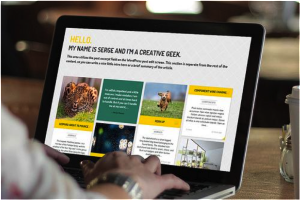by Laurie Sullivan@lauriesullivan, January 24, 2017

Conversion rates rose week-over-week from October 1, 2016 through November 30, 2016 by an average of 7.3%, but in December there were 65% more sales during the first two weeks of the month than the last two weeks, according to data released Tuesday.
Sales dropped toward the end of December. Conversion rates fell as much as 45% compared with best-performing week — Cyber Monday — which saw the highest online sales among Magnetic’s clients. But with all this up-and-down activity across online and in stores during the holidays, what type of behavior drove these cycles?
Market research company Ipsos Connect conducted the study for Magnetic, gathering responses from more than 1,500 consumers from December 28 through December 30, 2016. The purpose of the study was to survey consumers about their shopping behaviors and purchasing habits during the 2016 holiday season.
Forty-one percent of those participating in the study cited brand and retail Web sites as the most helpful type of media when it came to learning about holiday deals and promotion, followed by emails at 38%; television at 28%; online search from Google, Bing, or Yahoo at 25%; social media such as Facebook and Instagram at 20%; direct mail and catalogs at 16%; cashback, rewards, and rebates at 15%; print magazines at 11%; online publication Web sites at 9%; and radio at 8%.
It’s no surprise that females at 44% versus males at 31% found emails from brands and retailers more helpful in learning about holiday promotions, but men were more likely to use more than three devices to conduct research before making a purchase.
Mobile played a major role in purchases this past holiday season. Among Magnetic’s clients, aside from the study conducted by Ipsos, mobile visits grew 63%; orders, 44%; and revenue, 43% — peaking during the week of Christmas, whereas desktop showed strong engagements the week of Cyber Monday. Mobile visits reached their peak on Christmas day, making up 70% of traffic.
Magnetic’s data also shows 23% more sales for the week of Cyber Monday compared with the week of Black Friday; as well as 4% more visits and 31% more orders on Cyber Monday vs. Black Friday. The data also shows its clients saw 25% more online sales on Cyber Monday, compared with Black Friday, as we as a 27% higher conversion rate on Cyber Monday, the highest daily conversion rate all year.
Findings from the Ipsos study also show that mobile played a greater role in “deal-oriented days” during 2016 compared with 2015. Black Friday mobile visits rose 24% year-over-year and Cyber Monday mobile visits rose 25% YoY. The 2016 data shows a 35% increase in mobile orders placed on Black Friday and a 34% for total online sales on Black Friday. For Cyber Monday, 2016 data shows a 42% increase in mobile orders and a 45% increase in total online sales.
While Black Friday and Cyber Monday vied for attention from consumers who want the convenience of buying online, 51% of Millennials preferred to shop online during Black Friday, 49% of Gen-Xers, and 56% of Baby Boomers. All three consumer segments preferred shopping online during Cyber Monday: Millennials at 70%, Gen-Xers at 72%, and Baby Boomers at 80%.
MediaPost.com: Search Marketing Daily
(377)
Report Post







